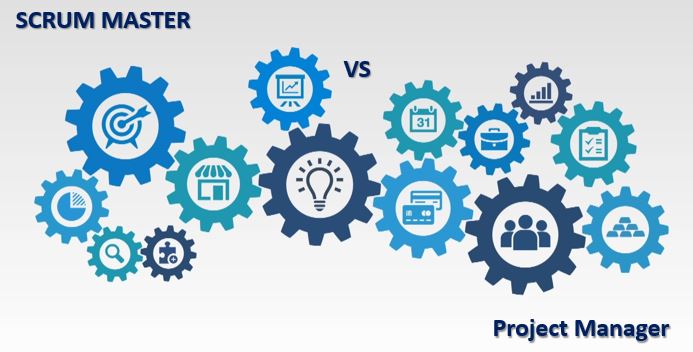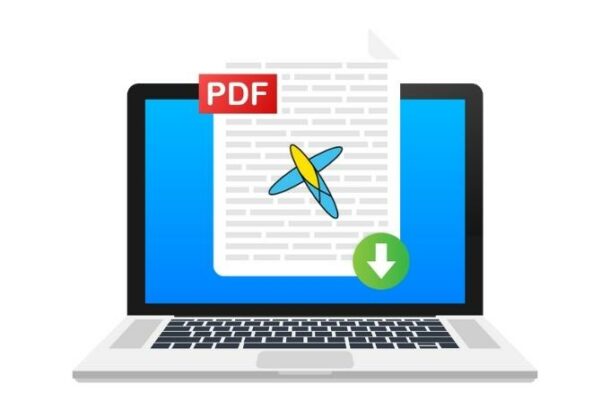
by Krishna Chodipilli | Apr 22, 2022 | Scrum Training
Ask that question and you face one more: What am I asking about? In the spirit and work of the Agile scrum, the developers take responsibility for producing the increment, the iteration, and in that sense own the product quality. As part of this process, teams often rotate developers across project modules to facilitate collective ownership of the quality.
In the spirit and work of the word itself, “owns” points to the whole product development team that includes the product owner and the scrum master. They are integral to the development team and key to the foundation of the scrum framework. The team that owns the quality is a team that operates under agile scrum methodology. The product owner and scrum master ensure that agile criteria are met.
Owning the quality suggests scrum team satisfaction with a bright outcome, but remember that the stakes are always high — and flexible. The process of producing high-quality increments results from the work of able and dedicated scrum team members.
Agile teams
Agile project management and the entire team organize around the methodology of agile principles. The team embraces responsive planning to maintain continuous improvement, quality assurance confirmation by testers and end users, attention to user stories, and recognition of team success by respect for the definition of done.
Singular to the organization of agile teams across industries is that all management functions emerge out of the collaboration among team members, including the product owner, stakeholders, and the scrum master, as well as business analysts, DevOps (software development and IT operations experts), front-end and backend developers, and iteration testers. This entire team works in sync throughout the agile software development process.

Product owner
The product owner keeps the scrum team’s focus on the customer’s perspective. In face-to-face communications, they make sure that project vision and market strategy remain central to project management. They maintain the product backlog and define acceptance criteria for each product backlog item, and they engage stakeholders, end users, and sometimes other product owners in the development process. The product owner is knowledgeable about both the product and the development process and is, most importantly, empowered to make decisions.
Scrum team
The Scrum Guide (see scrum.org for a details) describes the scrum framework as a creative and efficient tool for developing products of high quality and value. Self-organizing, cross-functional teams collaborate and experiment to produce quality increments releasable to the end user. That’s tidy, but the real work of this high-performing development team is even more interesting.
The development team — including the product owner and scrum master — decide how to turn product backlog items into high performing increments, or iterations. The team members have no titles and there are no sub-teams, because all necessary skills and commitment to the project are already parts of the whole.
Two or more scrum teams can use the lightweight methodology of the scrum framework to approach more complex projects, from sprint planning to the daily scrum and scrum events.
Quality worth owning
The scrum master
In the scrum framework, the scrum master is the facilitator of continuous improvement in the work of the development team. This designated servant leader for the scrum team identifies and eliminates impediments to collaboration toward a successful product increment, maximising functionality and business value.
The scrum master plays an essential scrum role and it does not overstate his importance to say that this servant leader ensures that the quality of the increment is worth owning.
The scrum master is teacher, facilitator, conflict manager, and unafraid of productive, even disruptive, change necessary to reach that definition of done. A great scrum master isn’t noticeable, unless needed. And when needed, ready to guide and inspire, always on task and always listening. They make sure scrum events, like the sprint review and sprint retrospective, are organized and entertaining, with clear purpose and productive outcomes.
Find out more about Project Manager vs Scrum Master

Owning quality in a scrum team
The standup daily scrum is a dynamic part of scrum team work. Scheduled for the team by the team, it takes place at a time that respects all team members. Coming together in common purpose, team members can inspect and adapt the development team’s progress toward the sprint goal. Developers discuss current user stories to help them reach agreement on the product backlog items they can complete during the sprint.
The scrum master is ever committed to achieving the sprint goal. In the scrum, delivery of a high quality increment focuses on customer satisfaction and a working product, and it’s not always about meeting prescribed or even tested metrics. The quality and value of the iteration is the direct result of a constantly dynamic scrum.
To say that the customer owns the quality seems correct, if we think in the transactional sense. To say that the scrum team owns the quality points to a different model, the agile model that engages the energy of the full collaboration among focused professionals to achieve the sprint goal, the working product.
Learn more about scrum teams and digital transformation with our Agile Training & Scrum Training with online courses from Leadership Tribe today.
by Krishna Chodipilli | Apr 4, 2022 | Leadership And Management
Can anyone be a great leader? is a vague question. Do you want to be a great leader? is a demand both challenging and personal.
You can’t begin to lead without the desire, and you can’t succeed without shaping and directing it. The desire to lead is the foundation for success in leadership skills training. You may be a born leader, but skills, experience, executive education, and curiosity will make you a great one. And with a nod to Agile principles, an executive’s empathy for the people they lead informs the utility of every personal leadership skill.
Talent and chance often determine who has the opportunity to lead, and under what circumstances, and some of us are ready to step into the breach as needed to fill a power vacuum or management emergency.
Commitment to the leadership role is the first step, and to bring a workplace together the next step of effective leadership is to actively listen, to understand what’s said and meant, and to respond and communicate clearly — to everyone. If you inspire trust you’ll be able to align employee needs with company goals as you manage change and aim for ease of operation.
The executive leader, a vice president, and a chief executive are at the top of a general management network of senior leadership, human resources professionals, and team members. The executive leader sets the tone for all, accepting decision making as a constant and seeing that distractions are kept to a minimum.
Conscientious and effective leaders can determine the correct action plan for a business managing change in the midst of new technological, digital, public health, logistical, or supply chain challenges. Because the competitive stakes are high and the business world is dynamic and full of disruptions, effective leaders will be able to focus on a prioritized initiative at hand.
The best executive leaders advocate for the best in everyone participating in a business environment. Always taking the pulse of organizational behavior, they act as mentor and coach to their teams and employees. Guiding the professional development of those around them, great leaders ensure that able successors will be ready to step in, when needed.
Executive leadership training and development programs for teams
Executive leadership development programs are management education programs. They engage senior executives and senior leaders both as individuals and in collaborative (teamwork) decision making. Among the many education programs on offer, Leadership Tribe’s leadership and management training program has a goal oriented methodology aimed at both established companies and entrepreneurs.

Leadership Tribe offers professional development training, with executive coaching, to help you to:
- clarify the business vision by working with a small group of decision making executives to develop a strategic plan.
- create adaptive action plans to address business challenges and take your enterprise to the next level.
- evaluate your personal leadership effectiveness and be able to measure it against the output of your peers.
- strengthen the scope of your influence with boards, stakeholders, partners, and shareholders.
- improve your communication skills. Whether in person or by email, you’ll want to be clearly understood, because mystery is a most ineffective leadership tool.
- balance and manage your own energies. Time is easy to manage, but we’ll help you learn to pay attention to your well-being — your body, emotional and mental health, and spirit.
Leadership and change management, a note:
It may be a familiar phrase these days, but we live in tumultuous times. The uncertainty and changes this brings every day can strengthen or destroy a company. Whether during a pandemic or facing a merger and acquisition, able leadership and good management can ease the fallout from disruptions and transitions throughout an organization .
Strong change management at every level of an organization can move a company from “That’s the way we’ve always done it” to a reinvention that will keep a business viable and vital. Recognizing this urgency, skills and methodologies to manage change are addressed in leadership programs and within many businesses.
Leadership roles and senior management roles in the healthcare industry, the nonprofit sector, and corporations alike are evolving in a demanding new environment. Only a more adaptive leadership style can implement the most useful and effective organizational change.
Leadership Tribe will help clients design and set in motion their business transformation journey from start to finish. Innovation with minimal disruption is our specialty. Learn more about digital transformation and executive leadership with our Agile training online courses from Leadership Tribe today.
by Krishna Chodipilli | Mar 31, 2022 | Agile Methodology
UX design and the design thinking process
User experience (UX) in the design thinking process is the hear of Agile software product development. Design teams approach the problem solving process with empathy for the user experience, then define the problem, follow that with the product ideation phase, produce the prototype, and conclude the cycle with final testing and approval. Sometimes, user testing points to a need for changes or to meet unforeseen challenges. The team may then return to previous stages of product design in order to reframe the problem and rework the process until the goal is met.
The Agile design thinking process is at once open to change and fundamentally rigorous. Using principles of this process in brainstorming sessions, the design team can coax fresh insights from existing data. Because continual changes to business tools and practice require innovative problem solving techniques, defining the scope of a complex problem is the design team’s first step.
Those wicked problems
Wicked problems include ambiguous or unknown factors that have no easy or obvious solution outside a creative design thinking approach. Wicked, indeed.
With an eye toward iteration and outside-the-box design thinking, the Agile team uses UX design tools to address these poorly-defined or perhaps unknown problems. The team works to frame (or reframe) these wicked problems in ways most responsive to human beings with human needs. This design process follows the path of — and it bears repeating — human empathy, clear definition of the problem, ideation, prototyping, and testing.
Agile is iterative, not linear
Agile design thinking is an iterative, not a linear process. The difference is worth defining: Iterative stages of development may proceed outside of the expected sequence, work in parallel with other stages, or they may be repeated, as necessary. A linear process, on the other hand, works a problem through steps defined at the outset, with no input or changes made or suggested by stakeholders or end users before product completion.
Able to empathize with and understand the needs of stakeholders and end users, with a clear problem statement in hand, the development team is ready to look at potential solutions by using innovative problem solving techniques.
The ideation phase, one step in design process methodology, is a core design thinking principle that deserves some special attention. The work of ideation is to articulate as many ideas and potential solutions as possible. There are no judgments in the ideation process, no right or wrong — just as many solutions as possible from the design team, consultants, and all stakeholders.
Moving from the empathy and problem definition stages, crafted personas are useful development models and effective tools for the ideation stage. Personas enable the design team to keep product development human-centered as they focus on framing their most innovative solutions.
The final phase of prototype testing in the iterative process may bring to light an unforeseen problem and return the team to previous development stages. Even in the later development stages a fresh look at product design and performance can guide team members toward the best product performance and user experience.

Both organized and fluid, the iterative Agile design process is rooted in four principles of design thinking. These principles help strengthen the work of both onsite teams and digital consultancy firms from the very start of the design process:
Principles of design thinking
The Hasso-Plattner-Institute of Design at Stanford University has codified for design teams four principles to help organize and encourage the most responsive iterative process. Learn more about the 5 key stages to design thinking.
- The human rule: All activity is social in nature — and good user research helps separate customer experience needs from the noise. Complex problems clearly articulated lead to responsive, creative solutions.
- The ambiguity rule: Ambiguity is inevitable, so brainstorming can only increase the capacity of your team to use their skills during the entire process from original problem statement to testable prototype.
- All design is redesign: Amidst changes in tech and society, basic human needs (user needs) remain constant and integral at every stage of the innovation process.
- The tangibility rule: Prototypes make possible solutions tangible and easy for testers and real-world end users to understand and evaluate.
The problem solver’s point of view
Creative solutions to defined problems emerge out of the ideation sessions. All potential solutions engage smart and committed teams of UX design thinkers — the problem solvers.
As part of the UX design process real users test the final iteration of a new product — or the reframing of an existing product — to determine how well it implements or enhances business and programming needs.
In our tech-platformed world these final iterations of product design are most effectively evaluated in user testing sessions. Here, you’ll observe how target users interact with your prototype and what they have to say about it.
The success of both startup entrepreneurs and established enterprises depends upon how well their product meets end user needs, and how well their product eases and enriches the customer experience.
The tools that support creative problem solving are neither magical nor entirely intuitive, but they can all be learned and applied. Potential solutions to issues of product redesign and new product development may be most successfully organized by UX design thinkers in an Agile plan.
With innovative techniques and minimal disruption the Leadership Tribe will help clients design and set in motion their business transformation journey from start to finish. Learn more about digital transformation such as Agile Training & Scrum Training with online courses from Leadership Tribe today.
We also take a look at Why Design Thinking is Important here.
by Krishna Chodipilli | Mar 25, 2022 | Leadership Tribe
Even though the concept of agile methods is associated with Software development projects, it offers the same value when managing non-software projects. Leadership Tribe has been working with organization’s globally to develop and deploy better, faster, cheaper, products and create happier employees and improve customer satisfaction.
The Need
Sanria Engineering, a structural engineering company which provides multi-disciplinary solutions in connection design, 3D Modelling, Steel Detailing and Project Management Consulting for clients across North America, Europe and Asia was facing unpredictable profit margins due to growing competition and complex client relationship.
The company operated from a legacy-based waterfall approach of traditional engineering practices within a silo-based organisational structure. Needless to say, the need of the hour was to transform into a people-centric and responsive agile engineering enterprise to adapt readily to prevailing market dynamics. The strategic leadership team desired a future where growth was more inclusive and less dependent on organizational structure, and leadership was self-driven with the rank and file contributing to a organizational change in the cultural landscape in which the company operated. A culture which was to be aligned to an adaptive business environment while fulfilling aspirational current needs.
Goal of Agile Transformation for an engineering company
The intended outcome of Agile transformation is clear: “the ability of the organisation to renew itself, adapt, change quickly, and succeed in a rapidly changing, ambiguous, turbulent environment” as well as
- The ability to quickly reconfigure strategy structure
- Processes
- People
- Technology towards value-creating and value-protecting opportunities
Yet implementing Agile itself is a means, not the end. The goal is to enable the organisation to generate instant, friction-less, intimate, incremental, risk-free value at scale, and the financial rewards that flow from that capability.
Take Stock – Understanding the Current State
On examining the various current states of the nation with the primary stakeholders. The top management found areas which are not working and learnt what progress they have made to date as well as what constraints they were facing. Strategic leaders along with Leadership Tribe established a joint strategy founded on the following core issues and also considered how the firm’s own management relates to the world of Agile management and what challenges lie ahead on an Agile journey.
The initial step was to fully integrate with the top management and first-line leadership to identify the issue of primary pain points. Issues that are not apparent yet impact the outcomes of the business.
Our team of Agile Coaches facilitated a series of retrospectives to bring forth issues that were working, not working and need to be abandoned as per the prevailing perceptions. To affect a more robust and enduring implementation road map, pilot project teams were created and then scale across the operational teams.
- Defining a clear North Star (Vision, Mission)
- Articulated an engagement model based on specific Objectives with Key Results (OKR’s)
- Designed an Agile implementation program incrementally
- Measured what matters for the organisation
Why Pilot Teams?
The value outcomes from the pilot agile teams would serve as a template and demo to facilitate transformation for other teams. The intent was to work on a ‘small chunk’ and then scale across. Through extensive and sustained coaching, facilitating and training interventions we measured, created and supported issues of right-sizing teams, improving product development cycle time, managing span of control, identifying rework, improving the quality of client-specific relationships and causing growth opportunities. Concurrently, we supported key stakeholders in a change implementation process, with clearly defined roles, responsibilities, competencies and key performance metrics at each level. The governance model was also calibrated to facilitate the transformative process.
“The intent of the transformation is ‘way of being’ than a mere ‘method of doing’. This we achieved by co-opting new age coaching and facilitation techniques, such as NLP, Emotional Intelligence, Combat Leadership and team performance and Agile frameworks” – Quoted by the Strategic Leader
A transparent, productive and collaborative stance based on mutual trust, openness and respect were created with the board members and key stakeholders.
Outcome delivered by Pilot Teams
Pilot teams adopted new ways of working with Agile Transformation; the leaders and product owners from the pilot teams are now implementing the second phase of the transformation. The following outcomes validated by the top project management teams.
- Reduction in work in process
- Early and continuous delivery to customers
- Continuous improvement of quality and reduced rework
- Higher interaction with customers to remove blockers, commit
delivery schedules and deliver on time
- Team members are more cohesive and are working like teams rather than aggregation of individuals
- Enhanced productivity and higher revenues
“We have been successful in co-creating cross-functional teams, ensured seamlessness and alignment across verticals and creating team happiness and synergy” – Quoted by the Chief Operating Officer
Opportunities and Possibilities
Adapting to enterprise agility has created opportunities for responsive and more effective decision making loops, reducing backlogs and dependencies. The agile governance model has created a possibility for a culture of partnership and shared learning to thrive. The process of measuring key success attributes has enabled faster and high-quality development process, shortened rework and clear communication, thus improving overall customer experience and relationship.
The added benefit from this initiative is that implementing Agile has made the company leaner by reducing the time to market and more value focused. By adopting agile ways and with the optimization of 40% to 55% of the internal workforce, improving the quality of client interaction by 60%, the company has improved the economic value and expected to increase more as we are underway into the second phase of the transformation process.
“If you’re a non-IT team that wants to adopt the Agile mindset, you will likely encounter some resistance to change. This is good. Criticism of Agile can help your application of its values to improve. To encourage the implementation of Agile in non- development teams, you should first demonstrate the value that an Agile mindset can deliver” – Quoted by Pilot Team Lead
How Leadership Tribe can help with your Agile Transormation
Most of the areas that Agile methodologies contribute to include project streamlining, improving teamwork, expediting project deliverables and timely results. Our Team of Consultants have worked in both IT and non-IT project management for over 30 years whether with large corporations or new startups. We also provide courses for Scrum team trainings, Kanban boards and other business agility options.
Our experience in Agile project management helps teams think of a project first in terms of large goals at the strategic level, and then at a tactical level, has us think in terms of delivering production ready results.
The popularity of the Agile practices has further been backed by a report by PwC that has cited Agile projects to be 28% more successful than traditional projects.
Reach out to us to book an innovative day to identify areas to drive value through your organisation pipeline.
by Krishna Chodipilli | Feb 18, 2022 | Scrum Training
Scrum is a project management methodology. It’s used to plan projects by breaking down a whole project into smaller groups of tasks to be completed in iterations. It’s about managing tasks and delivering a product increment by increment. It was devised by Jeff Sutherland and Ken Schwaber in The Scrum Guide in the 1990s. Hirotaka Takeuchi and Ikujiro Nonaka first coined the term in 1986 in their article The New New Product Development Game.
Scrum & agile project management
The philosophy and method of Agile software development and project planning bring product owners, stakeholders, and team members together throughout the lifecycle of the development process. Dynamic self-organized teams focus on continuous improvement and customer satisfaction.
Unlike waterfall and other development methods, the scrum produces iterations — working increments of the final product — for testing and review by stakeholders and team members. Essential to the work of agile teams, scrum is a building block of agile project management and product development.

What are the 5 values of scrum?
The following scrum values are key:
Commitment – to sprint deadlines
Bravery – scrum leaders have the courage to inspire their scrum team
Focus – team members have precise focus on their immediate tasks
Honesty – daily stand-ups provide space to speak frankly about the project
Respect – open communication and collaboration requires respect between team members.
What are the 5 principles of scrum?
- Control – keep on top of the empirical process and adjust as necessary
- Organise – work out how best to reach a goal/ deadline/ product increment
- Collaborate – effective teamwork, alongside independent work, is key
- Prioritise – value-based priorities (most important/ time consuming/ costly)
- Iterate – break down a task into bitesize chunks (iterations).
What is the agile scrum?
Producing incremental releases for review and testing, the scrum process can mean fewer costly mistakes, the sort that occur late in the development process. Frequent iterations lead to a more quickly marketable end product.
As a part of agile methodology, the task of scrum is to determine what does and does not work — and how to fix it, fast, using the skills and full capacities of an able and dedicated development team. Daily meetings, called scrum events, ensure good communication essential to this teamwork process.
So, let’s organize the scrum:
What do you know about your project at the start, and what do you want the end product to achieve? In a scrum project timeframe, start to finish, you’ll be able to track progress and make changes along the way, when necessary.
In the agile framework, the basic unit of the scrum is the sprint. Each sprint begins with the sprint planning meeting, an event that determines the sprint goal and the sprint backlog, the list of work to be accomplished. The teams are self-organizing and the workflow is fast-paced, but there are essential and well-defined roles to play in the scrum process:
Scrum roles
Development team
Self-organizing software development teams of no more than ten members segment the project into separate goals. The team completes an iteration of each goal in what’s called the sprint, a process that usually lasts two weeks. Because each sprint focuses on discrete functionalities, deliverables are kept in line with stakeholder needs and expectations.
This scrum process is active and focused, engaging the talents and strengths of a cross-functional team that includes the product owner and the scrum master. These scrum roles oversee scrum project management, as set forth in the scrum guide.
Product owner
The product owner has a crucial communication role in the scrum team, and their empathy is a necessary attribute in the interests of progress and peace. They act as the representative of stakeholders to the team, and act as scrum team representative to the community of stakeholders.
The product owner will manage the scrum work; control risk; define and announce product iterations; communicate delivery status and progress at meetings; and note RIDAs (risks, dependencies, and assumptions). They will also negotiate priorities and the scope of the project; keep track of funding and the schedule; and clarify the product backlog, a scrum artifact that includes user stories and bugs fixed or fixable.
Note that user stories included in the product backlog items are written from the perspective of the end user, which may include management, testers, customers, and the development team. Complex tasks organized as user stories can help make difficult or complex projects more manageable.
Scrum master
The scrum master is not a traditional project manager. They are the facilitator of the scrum development process. Their responsibilities are to work with the product owner on the product backlog, and to make sure that needs are understood and that the work gets done in each sprint.
The scrum master will see that both team and stakeholders honour the definition of done; maintain scrum principles and scrum methodology; help the scrum team avoid impediments to progress; promote self-organization and cross-functionality; and optimize team progress with regularly held scrum events.
The daily scrum
At stand-up daily scrums — time-box meetings that should be no more than 15 minutes — the team can assess progress toward the sprint goal and make any changes necessary. These meetings are best held in the same place and at the same time every day. They’re conducted however the team decides, and they always focus on identifying impediments to progress.
The daily scrum may or may not be facilitated by the scrum master, and they are not a forum for detailed discussions, nor for updating progress charts. After the daily scrum meeting, individuals can discuss issues concerning current sprint progress in what’s called a breakout session.
What is a sprint?
Within an agile scrum, team members work in short bursts of time to achieve a goal. These bursts are known as sprints. Scrum team members will work towards a sprint goal with an end of sprint review to evaluate the process (a sprint retrospective). Sprint planning meetings will define sprint goals for the next increment.
Sprint review & sprint retrospective
In scrum software development, at the end of each sprint a functioning increment should be ready to go as a fully tested, high quality product to introduce in the final two meetings. At the sprint review, stakeholders give their feedback, and during the sprint retrospective, the scrum team discuss and reflect on what was learned by the end of the sprint and what needs to improve in the next sprint.
At this point, a publicly displayed burndown chart may emerge, with daily updates. It’s not as bad as it sounds. Technically, it’s not a part of the scrum framework, but it’s often used to provide a quick visualization of what has and has not been achieved in the sprint, helping the product owner to prioritize items in the product backlog, and for the development team to more completely assess methods and priorities.
Learn more about digital transformation with our Agile Training & Scrum Training with online courses from Leadership Tribe today.
by Krishna Chodipilli | Feb 18, 2022 | Scrum Training







